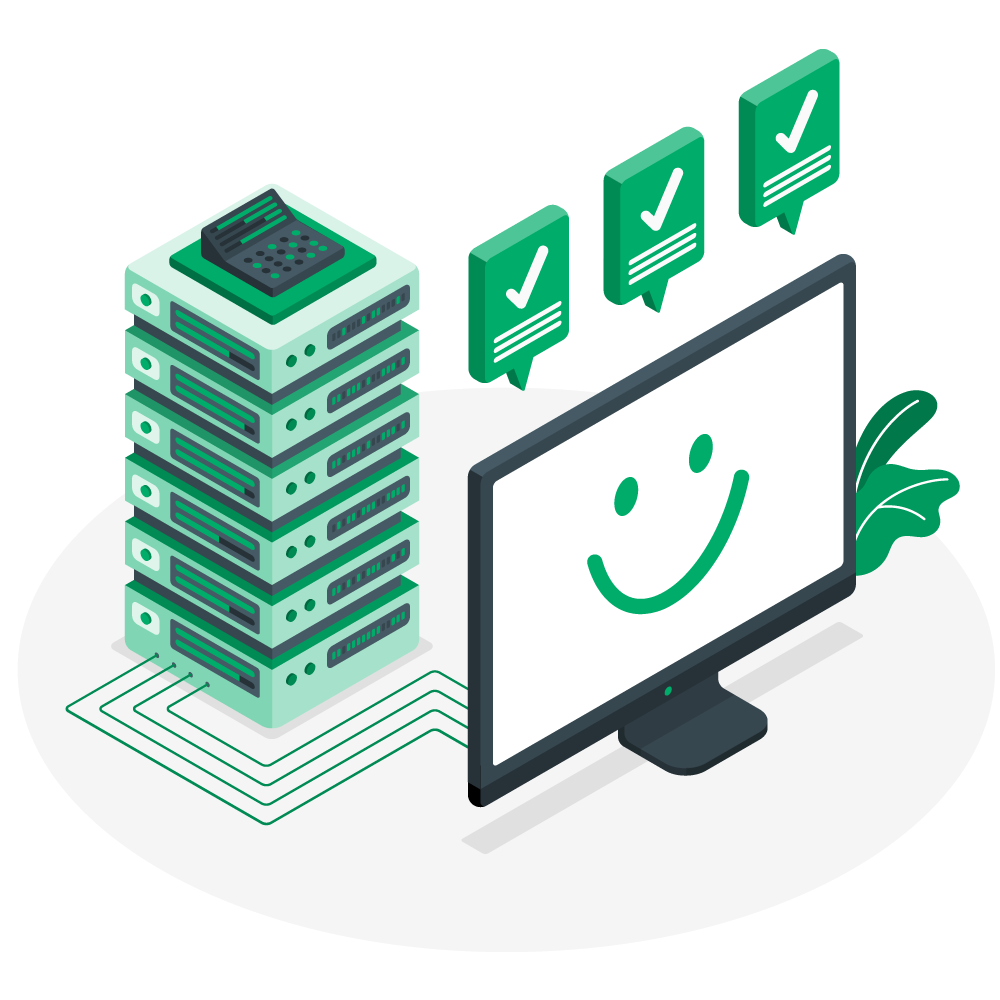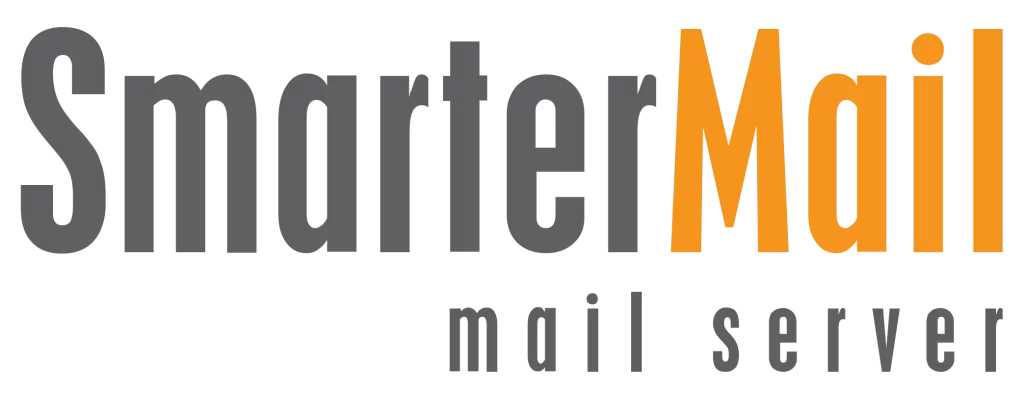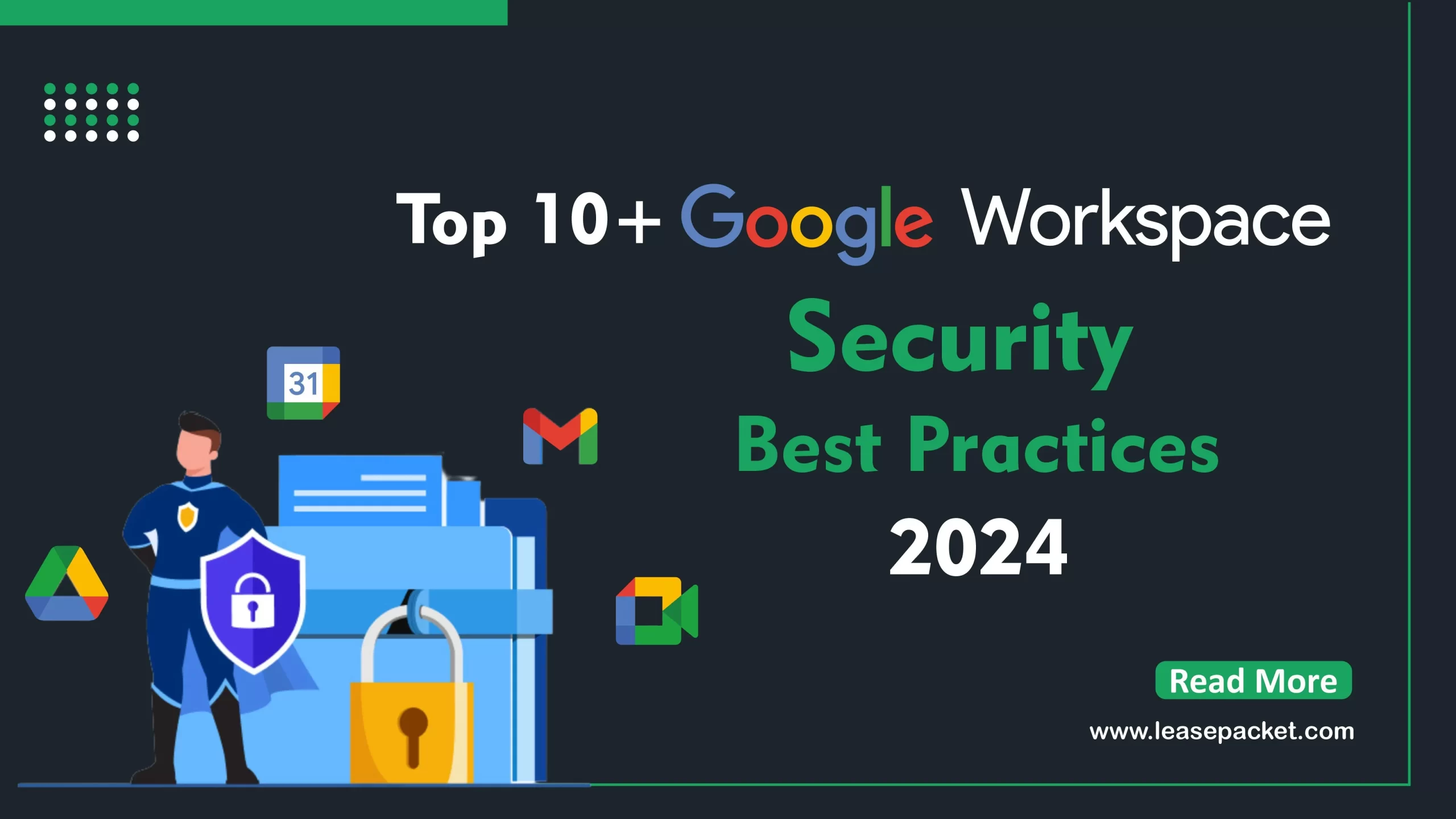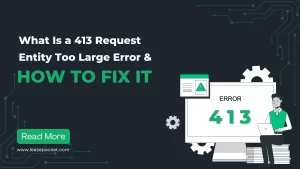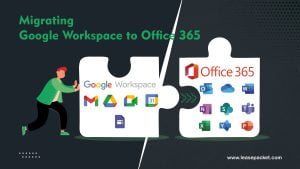As Google workspace has gained a lot of popularity in recent years. Many big organisations have adopted it in their remote work culture. With this massive popularity comes the risk of data breach. Security must always be top notch when using Google workspace. If you want to secure your sensitive data from phishing attacks and unauthorised access, you can follow the Google Workspace Security Best Practices. This will ensure your gmail account security, restrict you from unwanted logins and allow verified users to access. Here’s the Google Workspace Security Best Practices 2024 help you to improve the security of your organisation data.
Table of Contents
What is Google Workspace?
Google workspace is a google application, popular among all the businesses. Google Workspace (formerly known as G Suite) is a new productive platform, with all the apps which include; Calendar, Docs, Sheets, Slides, Drive, Meet and Forms. One of the best features of the Google Workspace is that it is accessible to all, including personal use.
Now, let us see why Google introduced Google Workspace?.
Google introduced Google Workspace. Why?
As we all know about remote working. During the pandemic, remote working became an essential part of our working life. Work meaning completely changed from going to work to doing work. Regarding this, Google modified its current tools and developed Google Workspace. Google Workspace has been developed to aid effective participation, cooperation and unite them together. The major goal of Google Workspace was to provide a customised user experience to all with enhanced security, customer support, make it easy to collaborate in real-time and access various Google applications from anywhere.
How Secure is Google Workspace?
Google Workspace is a cloud based service and comes with all the smart security features to keep your data safe from cyber attacks and unauthorised access. Here are some features:
Encrypted Data: Google Workspace comes with Client-side Encryption. It allows companies to use their own encryption keys. All the data such as Google Docs documents, Google Slides presentation and Google Spreadsheets in Google Workspace is encrypted by using HTTPS during transmission and 256-bit AES encryption.
Two-Factor Authentication: Two-factor authentication (2FA) is an additional verification process. It works as an extra security coating for users. It prevents users from unauthorised access to accounts. Users must enter a unique code generated by a mobile app to log in.
Access Check: Google Workspace empowers administrators to set the access control. To access the control, administrators can add users to allowlist. It ensures that only verified or authorised users can access.
Security Analysis: Google conducts regular monitoring to detect vulnerabilities and threads.
Approved Certifications: Google Workspace is certified with several industry standards, including SOC 2, SOC 3, ISO 27001, and HIPAA. These certifications ensure that the platform meets strict security and privacy requirements.
Benefits of Google Workspace
- Affordable and free services: get a free Gmail account, free access to Docs, Spreadsheets, Slides.
- More resources and features for paid customers such as Business email through Gmail, 100 participant video meetings, Shared calendars, Security admin controls, 30 GB cloud storage per user,Data loss prevention (Gmail + Drive).
- All apps under a single entity: Users can use all the applications via single control panel.
- Allow collaboration with the team in a real time.
Google Workspace Security Best Practices and Tips
1. Protect Your Password From Attackers
Password is a secret code that verifies the user during the login process. It is the first layer of protection that helps users from unauthorised access. The stronger the password, the more it protects. Users should set strong passwords to protect their sensitive data. Here’s the Google Workspace security best practices that help to protect your password.
- Strengthening the user’s verification process and passwords.
- Enable data loss prevention (DLP) or complex rules for data safety.
- Implement a 2 step verification process for the protection of sensitive data.
- Organise a recovery email and phone number.
2. Ensure Email Security
By default, Google Workspace allows users to share information. Employees can share information via gmail, meet, drive but it may cause leakage of confidential information of corporations. It is necessary to regulate the activities of company employees by granting access to verified users. Following Google Workspace security best practices that help you to ensure your email security.
- Allowing permission to verified users.
- Ensure strict adherence to the rules before granting access.
- Access to role based permission.
- Deleting spam emails.
- Enabling gmail features such as Advanced Protection Program and suspicious login alerts.
3. Avoid Logging Into External Or Unwanted Services
There are several websites and apps that allow users to sign in with their gmail accounts. Users accept this because this prevents users from creating a new account. These websites and applications use different technologies to track your activities and collect information. Sometimes, employees use their company accounts to login that cause harm to the company. Google Workspace security best practices that prevent you from unwanted logins:
- Restrict access to unsafe websites and apps.
- Read the URL carefully.
- Never click on a link embedded in an email.
- Ensure the legitimacy of the website.
4. Protect Business Details From Phishing Email
Phishing Email is the fraud practice of gaining unauthorised access to sensitive information. It causes harmful impacts on the company’s clients, partners, and overall reputation. These mails contain fraud transactions, illegal fund transfers, or fake invoice payments, and are also responsible for financial losses of companies. Additionally, these emails contain malicious attachments or links that enter the corporate systems. Safeguard the sensitive data and corporate system from malware and phishing emails with the help of these Google Workspace Security best practices.
- Installing scanning feature for all the mails.
- Allowed approved emails and blacklist unwanted.
- Ensure security for attachments.
- Enable SPF(Sender Policy Framework) to minimise phishing risk.
- Introducing DKIM and DMARK.
5. Safeguard Google Calendar
Google Calendar is a time-management and scheduling calendar service developed by Google. It allows users to schedule meeting events, create appointment schedules, set reminders, invite guests and provide information about upcoming events. Unprotected calendars are more vulnerable to phishing attacks, tampering and scams. It can cause confusion, missed appointments, and miscommunication, impacting personal and business operations. Following Google Workspace security best practices help you to protect your google calendar:
- Made changes in calendar privacy settings.
- Give access to authorised users.
- Turn off automatic invitation features.
6. Guard your Google Meet
Google Meet, a video conferencing service by Google that enables users to join high definition virtual meetings with up to 100 people. It contains private information and discussions. Illegal access to this information leads to data leakage. Protect Google meet with following Google Workspace security best practices:
- Made changes in recording settings.
- Confining the screen sharing option to authorised users.
- Ensure separate meeting rooms for security purposes.
7. Guard your Google Drive
Google Drive is the most popular free cloud storage service. It allows users to store and access files online. Companies use drive to protect their sensitive information. So, it is necessary to manage Drive settings and enhance its protection and security. Following Google Workspace security best practices help you to guard your drive:
- Restricting users to share outside the domain.
- Disabling the offline access.
8. Manage security controls with Google Workspace’s Mobile Management Solution
Google Workspace comes with advanced management features and advanced mobile management solutions. It empowers administrators to check security controls of all the devices within the environment.
9. Secure your Google Chats
Google Chat is a messaging application that allows users to send and receive messages and attachments such as photos, videos and documents. Companies and scammers both utilise this tool for different purposes. For business, it is used to share confidential information in the chat. Scammers use this tool to gain unauthorised access to sensitive information. Immediate measures are required to protect your personal information and confidential data. Protect Google Chat with following Google Workspace security best practices:
- Allowing outsider in domain only.
- Set up DLP rules in private conversations.
10. Secure your browser(Chrome)
Google Chrome is a fast, secure web browser developed by Google. It is well known as the primary doorway for all the resources. This makes it available to scammers. Security breach in chrome results in data theft, password exposed, fraud. Protect chrome from these frauds and scams by adopting the following Google Workspace security best practices:
- Regular updates
- Activating safe browsing option.
- Enable inbuilt protection and alert users from risky sites.
11. Keep Focus On Google Security Health Recommendations
These recommendations help customers and users by giving them advice regarding their data security. With the help of these recommendations, users analyse their email message and ensure its authenticity. The issues come under these recommendations ranging from how your data is stored, to how your files are shared, as well as recommendations on mobility and communications settings.
Conclusion
In this article, we have talked about the Google Workspace security best practices. Google Workspace is highlighted as a comprehensive cloud-based solution to enhance productivity, offering benefits such as innovation, scalability, mobility, and improved collaboration as per different business needs. These Google Workspace security best practices provide security tools to corporations for maintaining security and integrity of data. These security tools are important for protecting google accounts from phishing and other malicious activities. I am confident that this article will help you in adopting Google Workspace security best practices.
FAQs
Q1. How do I secure my Google Workspace?
You should follow these Google workspace security best practices. It includes enable protection from malware attacks, update your browser regularly, strong password, enable protection against phishing emails, and avoid unwanted login.
Q2. How can I strengthen user identity verification in Google Workspace?
By implementing Multi factor authentication(MFA), you can strengthen your user identity verification. It provides users an extra layer of protection from unauthorised access. Users have to enter a security code in order to sign in to their google account.
Q3. What permissions should I set up for better security?
Regulate the permissions with the help of following steps: Limit admin access to verified/authorised users, regularly audit the permission,adjust permissions according to job profile. It will help you for better security.
Q4. What steps can I take to improve Gmail security?
Improve your gmail security by enabling Gmail features such as Advanced Protection Program and login alerts, create awareness among users regarding suspicious links and phishing emails. It will help you to enhance your Gmail security.

